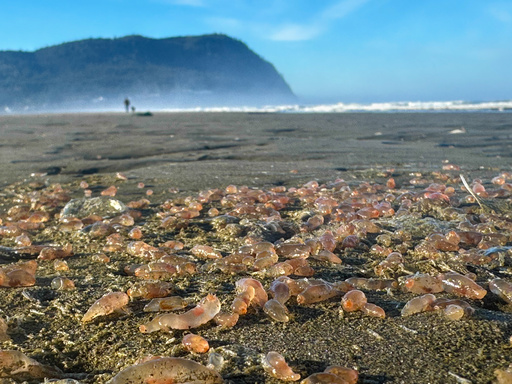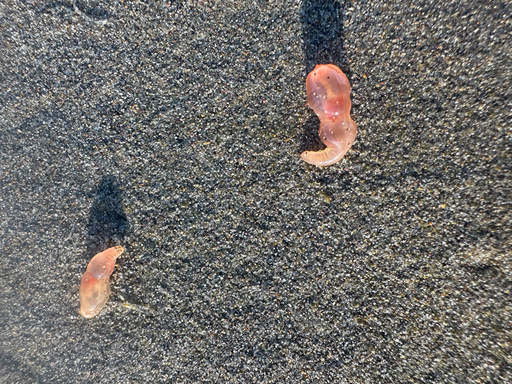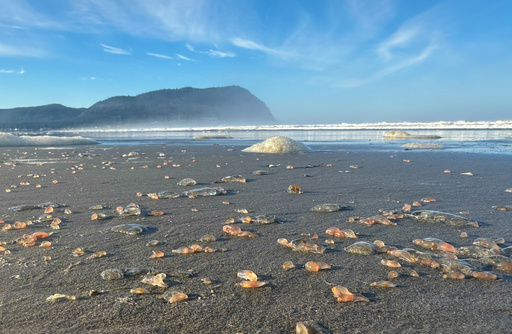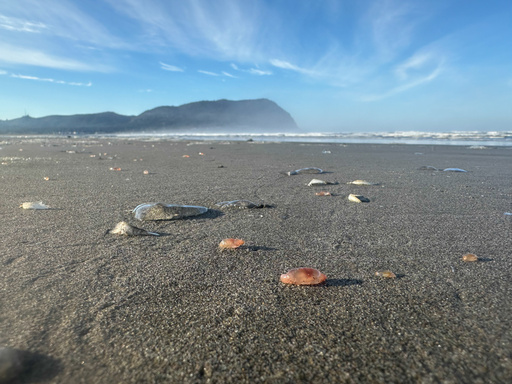Sea cucumbers wash ashore by the thousands in a coastal Oregon town
News > National News

Audio By Carbonatix
4:24 PM on Tuesday, October 21
By AUDREY McAVOY
Thousands of sea cucumbers have washed up on the beach in the Oregon coastal town of Seaside thanks to a combination of heavy surf and low tide.
The partially translucent, pink gelatinous creatures are called skin breathing sea cucumbers. They normally burrow into the sand along the low tideline and farther out. But on Tuesday, they were scattered across more than 2 miles (3.2 kilometers) of Seaside Beach, said Tiffany Boothe, the assistant manager of the Seaside Aquarium.
“They are literally littering the tideline,” Boothe said. They're about a half-inch (1.3 centimeter) long but can grow to about 6 inches (15 centimeters.)
The phenomenon can occur whenever surf and tide conditions coincide, which can mean a few times a year or once in a few years. Sometimes a few will be scattered here and there on the shore but there were large groupings on the beach during this latest episode. Boothe hasn't seen this many on the beach in a couple of years.
The sea cucumbers aren't capable of returning to their natural habitat on their own so they will dry up and die, Boothe said. They'll provide nutrients for the beach hoppers, beach fleas and other invertebrates living along the tideline that will feast on them. Birds don't eat them.
Whatever remains will likely dry up quickly and blend in with the sand. Booth suspects they'll be gone by Wednesday or Thursday.
The scientific name for the cucumbers is Leptosynapta clarki. They live along the coast from northern California to the Gulf of Alaska.
Seaside is about 80 miles (129 kilometers) northwest of Portland, Oregon.











